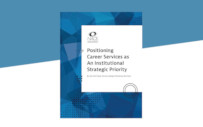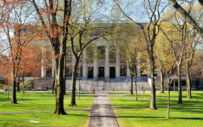
In an ever-evolving landscape, career services needs to adapt and innovate. Here, Hassan Akmal discusses how career services can reimagine itself to meet the needs of students and alumni.

The University of Texas at Austin (UT Austin) is a public Research 1 university with 52,000 students and 18 colleges and schools, including medical and law schools. Like many large universities, UT Austin has a highly distributed model of 15 career centers within schools, and each area operates independently.

During the pandemic in 2020, LaGuardia Community College—a public community college that is part of the City University of New York (CUNY) system—inaugurated a new president, who is an advocate for workforce development as well as for internships. In addition, the chancellor for CUNY established career services as one of his priorities.

A grant from the United Negro College Fund (UNCF) helped to move career services to a position of more prominence at Tougaloo College and embed career readiness in the school’s curriculum.

Career services at Michigan State University (MSU) is a centralized/hybrid organization of offices and is well-known for its Career Services Network, which is composed of career services professionals strategically located in central and college-based offices.

Career services needs to be strategically positioned on campus to provide the vision, guidance, and relationships to demonstrate its importance and value and to maximize student outcomes.

Soon after Mark Peltz was hired as the associate dean and director of career development at Grinnell College, it began a process of institutional elevation and prioritization of career services.

Over the past 10 years, there has been a clear shift away from housing the career center in student affairs.

The current drive to better understand and anticipate the future of career services may be distinctive in that it is influenced by certain environmental factors that threaten a potential sea change in higher education.

Given the increased attention to career outcomes from both government and university administrations, one would expect a significant commitment on the part of the university to the career services office. This commitment could be measured in terms of critical resources expressed as either added dollars or increased personnel to handle the increasing difficulty of counseling students to succeed in a depressed job market. Using data from two installments of NACE’s annual Career Services Benchmark Survey for Colleges and Universities (2007 and 2014), this article examines the strength of that commitment.